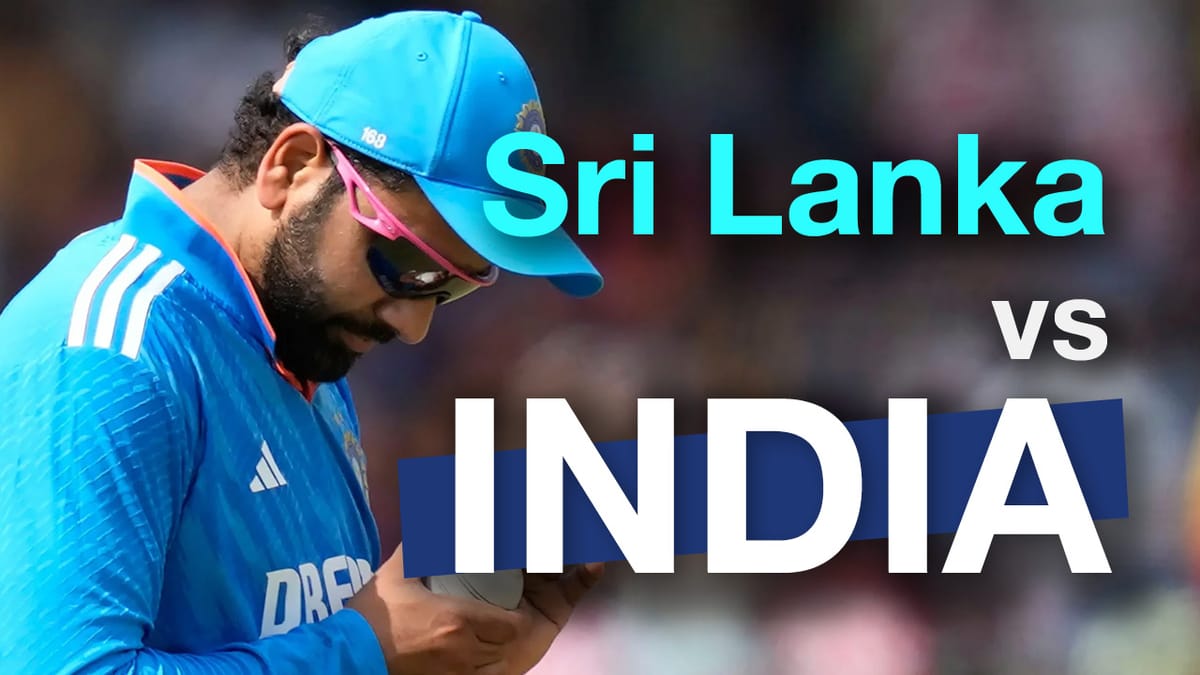Last Knock: Sri Lanka vs India - ODIs
This should be the future of bilateral series – fact-finding missions with teams trying to get something important out of them, and old legspinners taking wickets.

Download Hitwicket FREE for iOS/Android and build your dream team!
Stats by Varun Alvakonda
Sri Lanka should be ecstatic at their series win against India. In recent times, they've not really set the stage alight almost every time they have played a team as good as them or better. This is big for them.
But bilateral cricket isn't considered as important anymore. When teams rest their main players, and start to try out anyone who ever bowled spin at high school, we know that this is no longer nation vs nation. It is a Sri Lankan vs an Indian experiment. However, we've also seen how England, Australia and India still dominate these series without their best players.
And this is what Sri Lanka did. They did not have Matheesha Pathirana, Dilshan Madushanka, and Dushmantha Chameera. Maheesh Theekshana did not play the first two games, and Wanindu Hasaranga the last two.
So what does this all mean? Can India not play spin? Is Sri Lanka a new powerhouse? And is this loss a victory for India and Sri Lanka at once?
Usually none of this would matter, but with two ICC tournaments in Asia coming up, this was an interesting series on many levels. Is this the rare bilateral series where things actually mattered?
Rohit Sharma made all of India’s runs, 157 of them while striking at 141. Maybe he thought he was still playing in T20s. Axar Patel scored 79. India had so many batters in each team, and so few runs. Kuldeep Yadav faced 67 balls – except this time, unlike the India vs England Test series, it wasn’t good news.
The first two games followed very similar patterns. India would take six wickets with the score somewhere around 140. Then the Sri Lankans would fight back and get a decent – if uninspiring – total. India went nuts in the powerplay – thanks to Rohit’s carefree blitz – both times. But batting became a lot harder after the first ten overs, and Sri Lankan spinners wreaked havoc.
But this series should really be what these teams got out of it. Sri Lanka have played 21 bilateral ODI series against India in their history. This is only their third series win, and first since December 1997.
Dunith Wellalage was the Player of the Series, and he had good reason to be. He scored 108 runs at a true average of 38.21 and a true strike rate of 34.81 and took 7 wickets with a true economy of -0.26 and a true wickets per 10 overs of 2.71. The 21-year-old allrounder brought them back into games on both sides of the ball.
This isn't even the first time he performed against India. He almost stole an Asia Cup game against them last year. He now has Rohit Sharma and Virat Kohli out five times in ODIs. In fact, he has a lot of good batters in his pocket. The last ODI World Cup was probably too early for him, but maybe the next one will come at the right time.
Like a bride, Sri Lanka had something old, something new. Their legspinner Jeffrey Vandersay debuted in December 2015, and has played only 24 matches since. There have been only two years when he has featured in more than five matches - six in 2017 and seven in 2022. In fact, he even played a part in Sri Lanka’s series win against Australia at home in 2022. This is the sort of thing that backs up Sri Lanka’s incredible bowling lineup.

Not to mention that Charith Asalanka’s ODI bowling record has 11 wickets in his career, and 10 of those have come against India. If he can be handy in Asian conditions that gives them a bowling option from the top five.
Another huge positive for Sri Lanka was that different batters put their hands up at various points in the three matches. Wellalage and Nissanka got fifties in the first match, five batters crossed 30 in the second, and Avishka missed out on a hundred by just four runs in the third. This series wasn't on standard ODI wickets, so Sri Lanka needed to problem solve and play the conditions - which they did quite effectively.

Sri Lanka have not made any runs for the longest time. Sure, it was still shaky, but there is something nice in this. It did help they batted first, and it might have been a different series if they hadn’t.
What about India? Do they have issues against spin? Suddenly this is the claim, and it needs a forensic look. They averaged 54 in the 2010s, and 44 in the current decade. Is it simply the fact that they are coming off a great era?

In the post-match press conference, Rohit brought up the fact that they don't sweep or reverse sweep enough. Rahul Dravid has mentioned this before. But Rohit also stated that these are players that have played a lot of cricket, and that they have their individual gameplans to tackle it.
Conditions also have a part to play. Indian batters were terrific against spin in the 2023 World Cup, but they also lost an ODI series against Bangladesh in December 2022. In fact, they average the least in Sri Lanka and Bangladesh in the 2020s.

Another reason could be the fact that India had Kohli and Rohit at the peak of their powers in the previous decade. They would milk spin for fun at good strike rates. Rohit averages a lot less, but he scores a lot quicker because he has attacking options available to him. But Kohli is one of the batters who does not play the sweep. When he was at his best, this probably mattered less. His slog sweep in the IPL seemed like a really positive move.

India’s seamers did not have a great series either. Siraj took three wickets at an economy of 6.28, while Arshdeep had two dismissals at 6.17 runs per over. In fact, India ended up conceding 65, 79, and 60 runs respectively in the final 10 overs of the three matches.

That should have ended worse, but Riyan Parag took three wickets on his debut, bowling nine overs. He was a big reason why Sri Lanka didn’t end up posting more than they eventually did. We haven’t seen him bowl much in the IPL, but he was the second-highest wicket-taker for East Zone (and the top-scorer) in the Deodhar Trophy last year. I compared his utility with the ball with someone like Sehwag, who could bowl some overs in favourable conditions. He also seems to have a lot of variations up his sleeve. If he’s a handy Joe Root-like part timer, India will take that.
Washington Sundar had a good series with the ball. He was even promoted to bat at four in the first match, something we saw India try with Dube and Axar in the next match too. He is perhaps a player that they would look to fill in the Jadeja/Axar role in both the white-ball formats in the coming years.
Rohit Sharma started the series saying it wasn’t a practice ground by any means. In the post-match interview after the third ODI, he dismissed any scope of them being complacent. He backed his team and said that the odd series loss does not take away anything from the consistency over the last few years.
But as I’ve said before, this is a good thing for India. They are taking themselves away from trying to win, and experimenting. That is what bilaterals should be. With the upcoming Champions Trophy and T20 World Cup in Asian conditions, they seemed to use this series as a doodle pad. How far could they push bowlers like Sundar and Parag? They even batted till nine in the third match.
But it’s also really important for Sri Lanka. They have been poor in quite a few World Cups in a row now. We all know how good their bowling could be when fully assembled, but it’s never quite hit because of key injuries. This series they had a few players out, yet the team stood up.
The reason this was such an interesting series, or two series, was because both teams actually got something out of this. Sri Lanka just needed to win against a better side, and India wanted to test their versatility and wacky lineups.
This should be the future of bilateral series – fact-finding missions with teams trying to get something important out of them, and old legspinners taking wickets. This is the dream combination for me.




